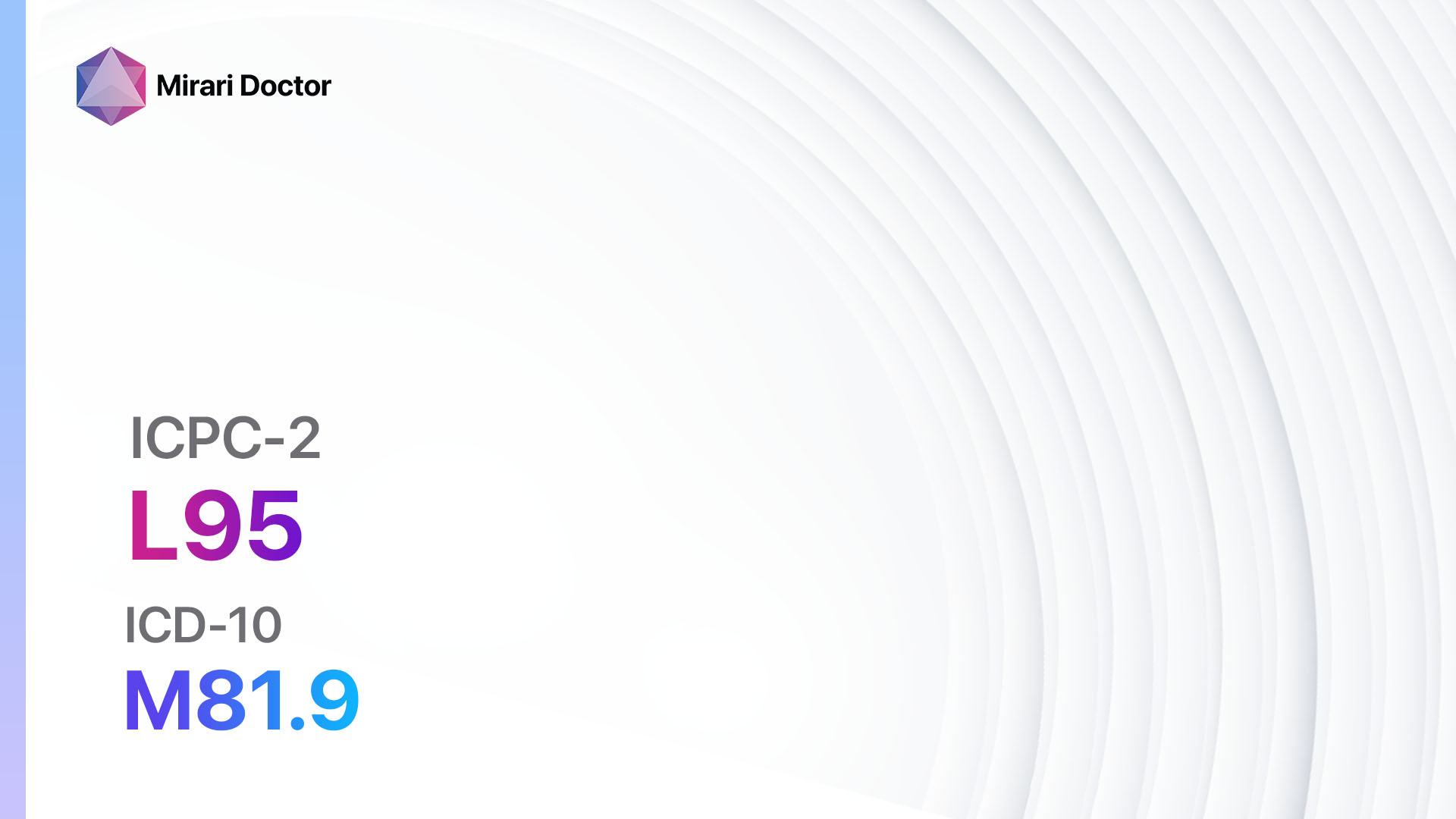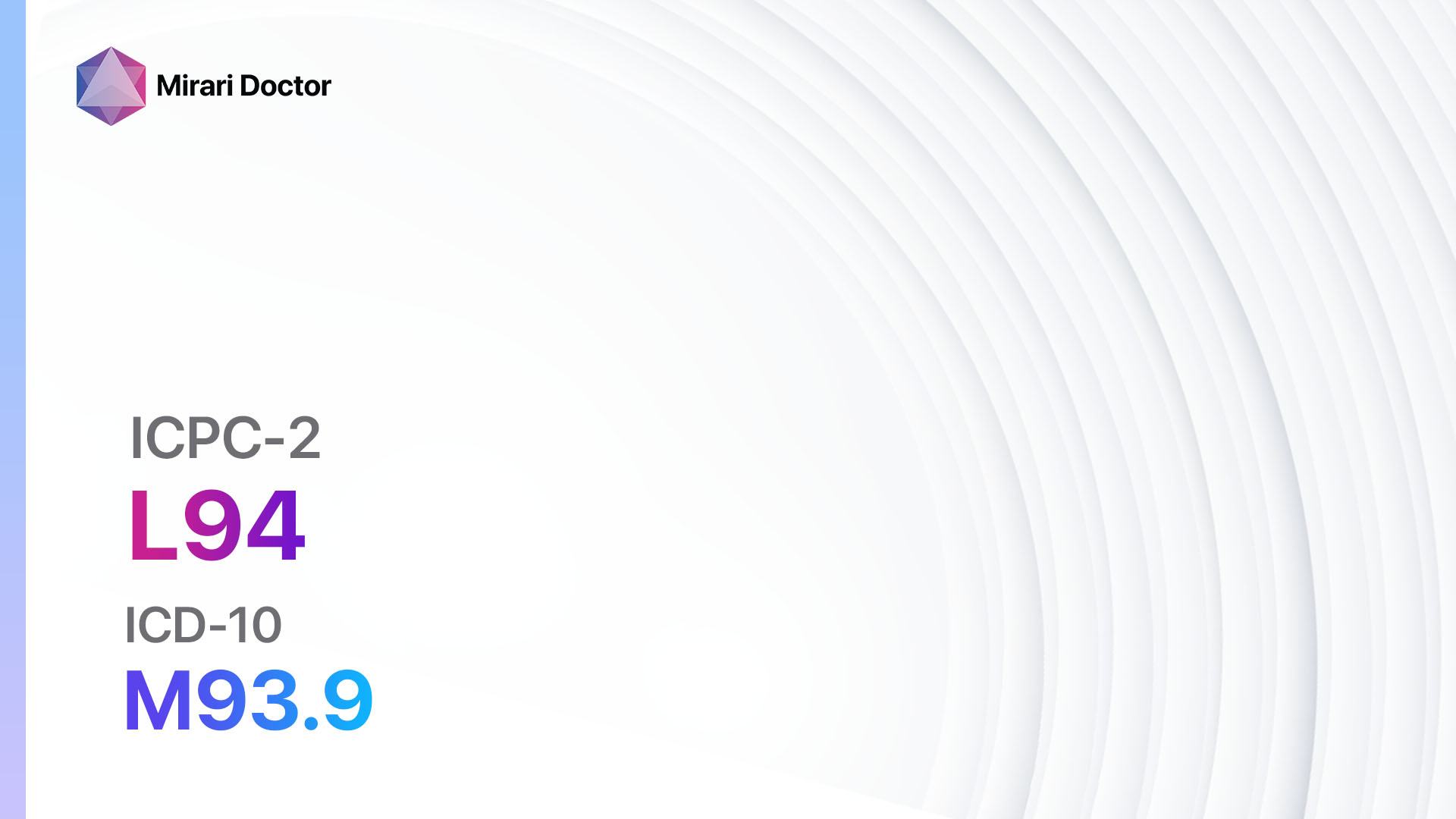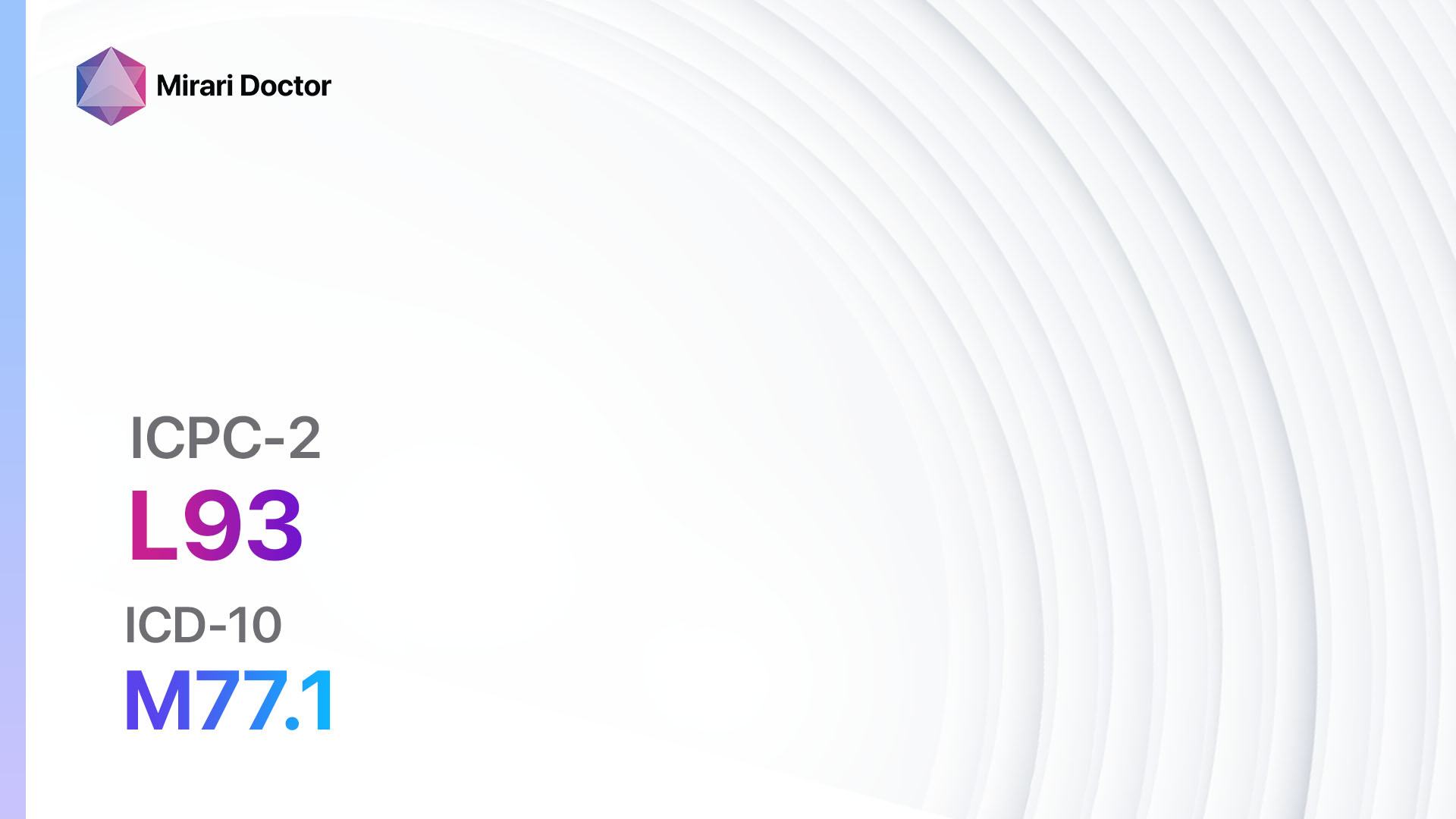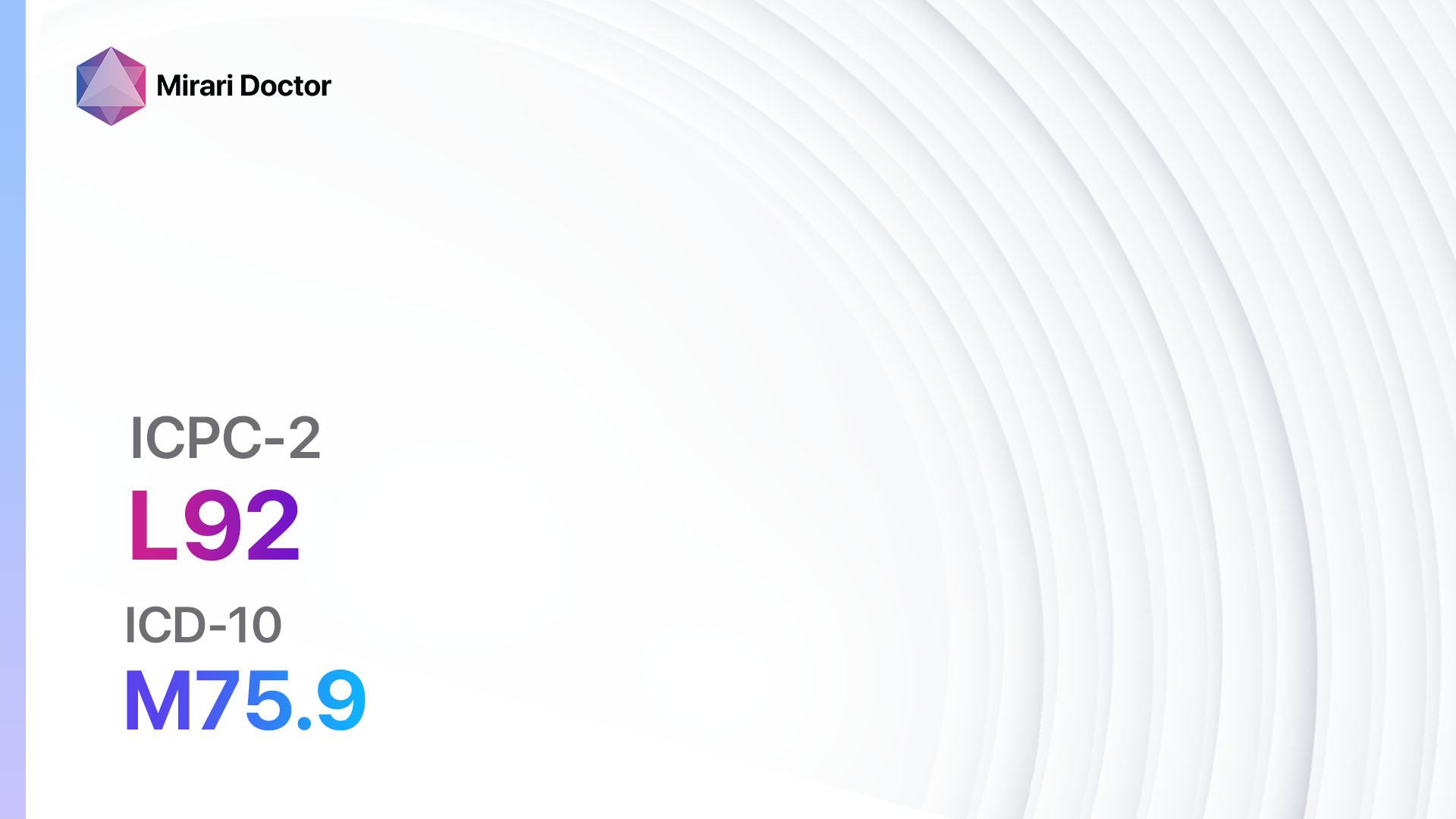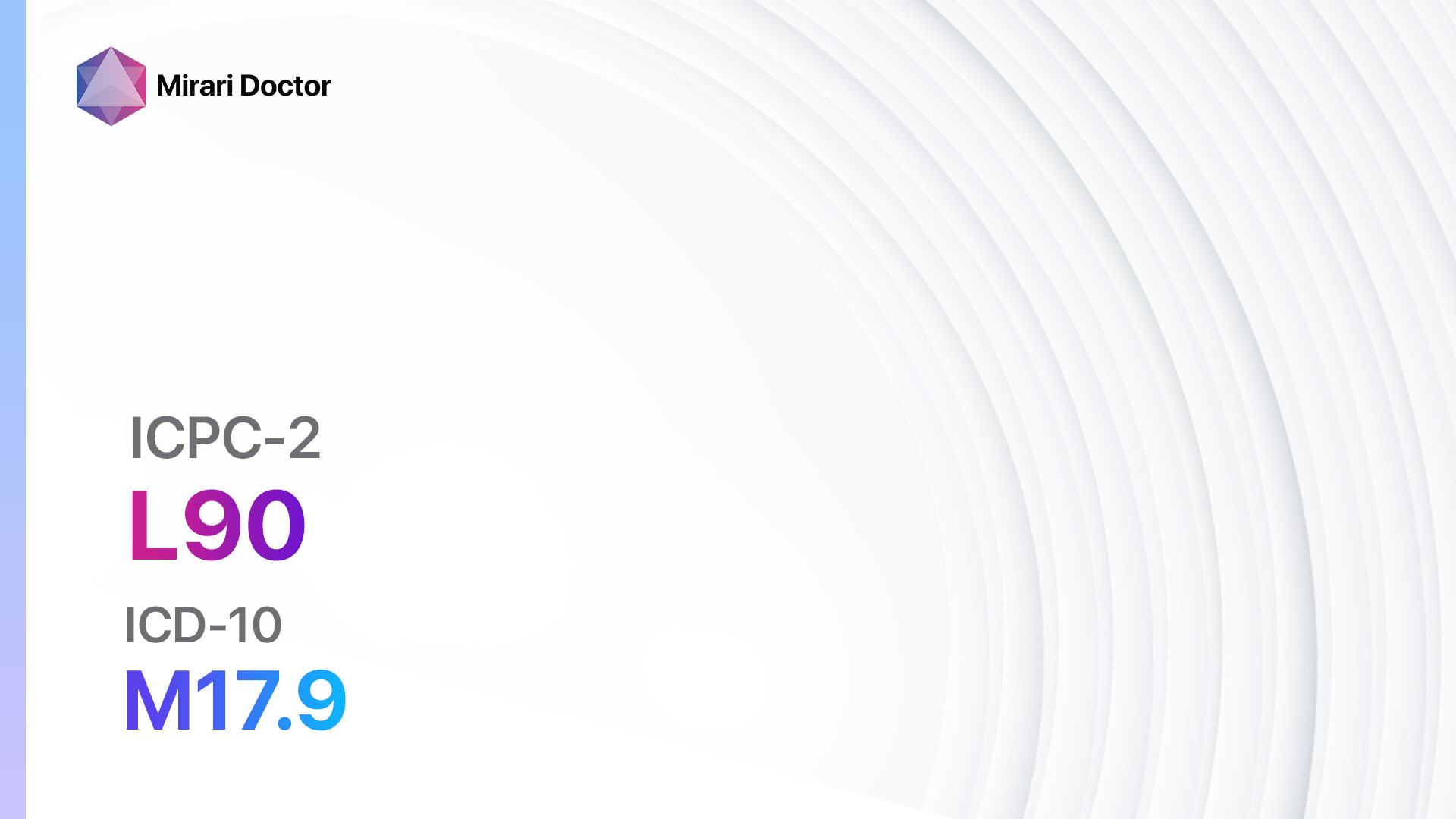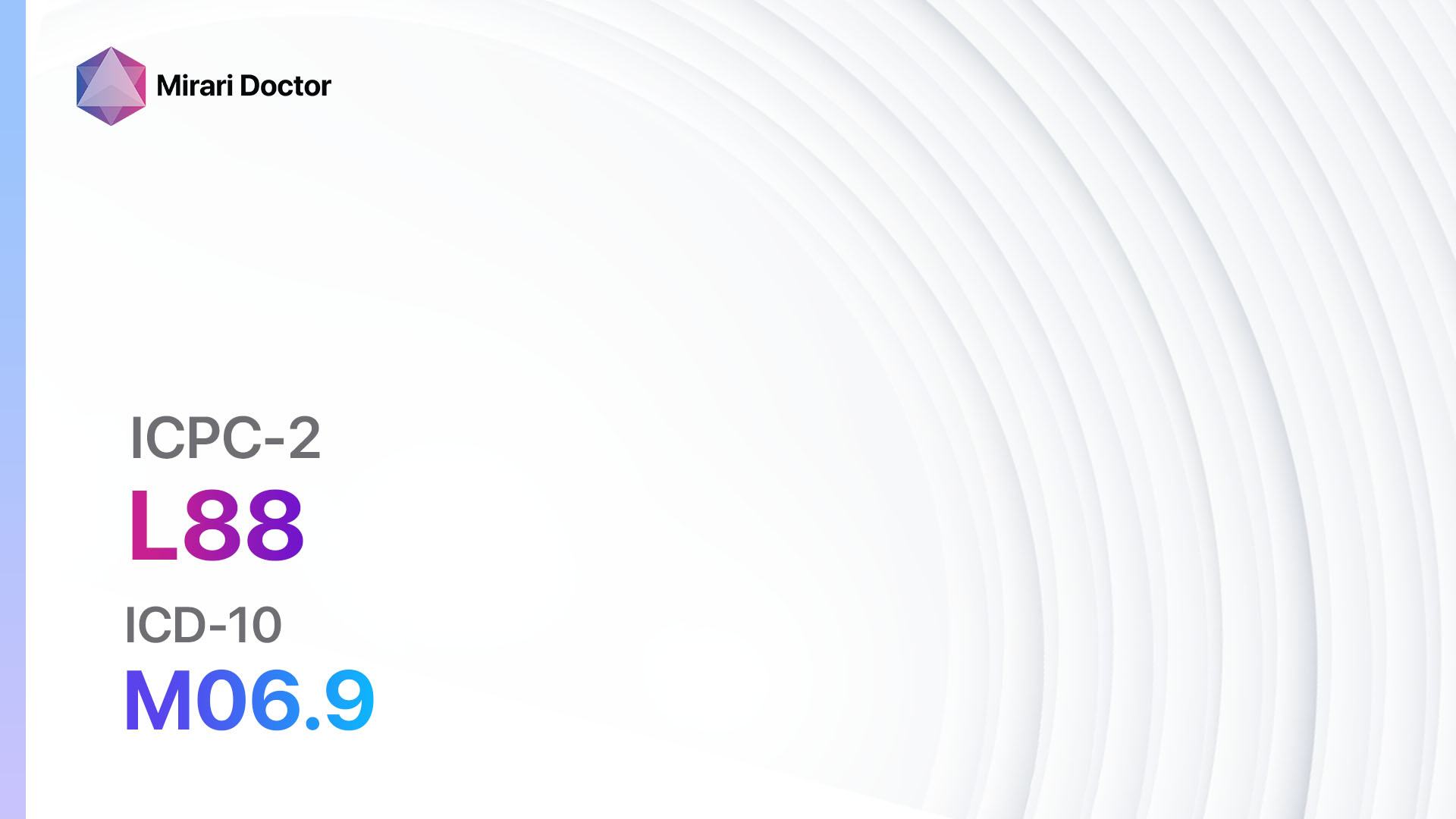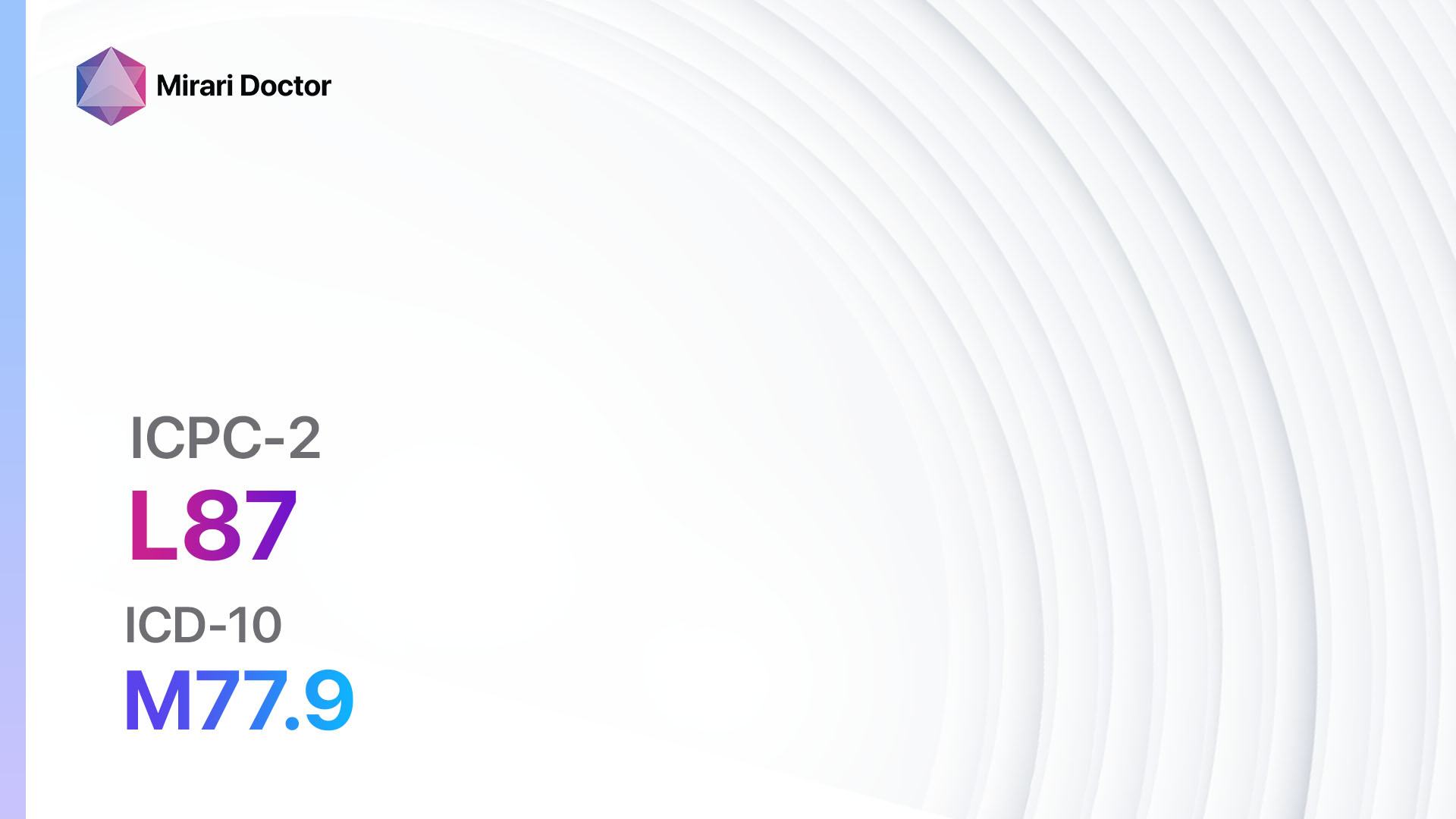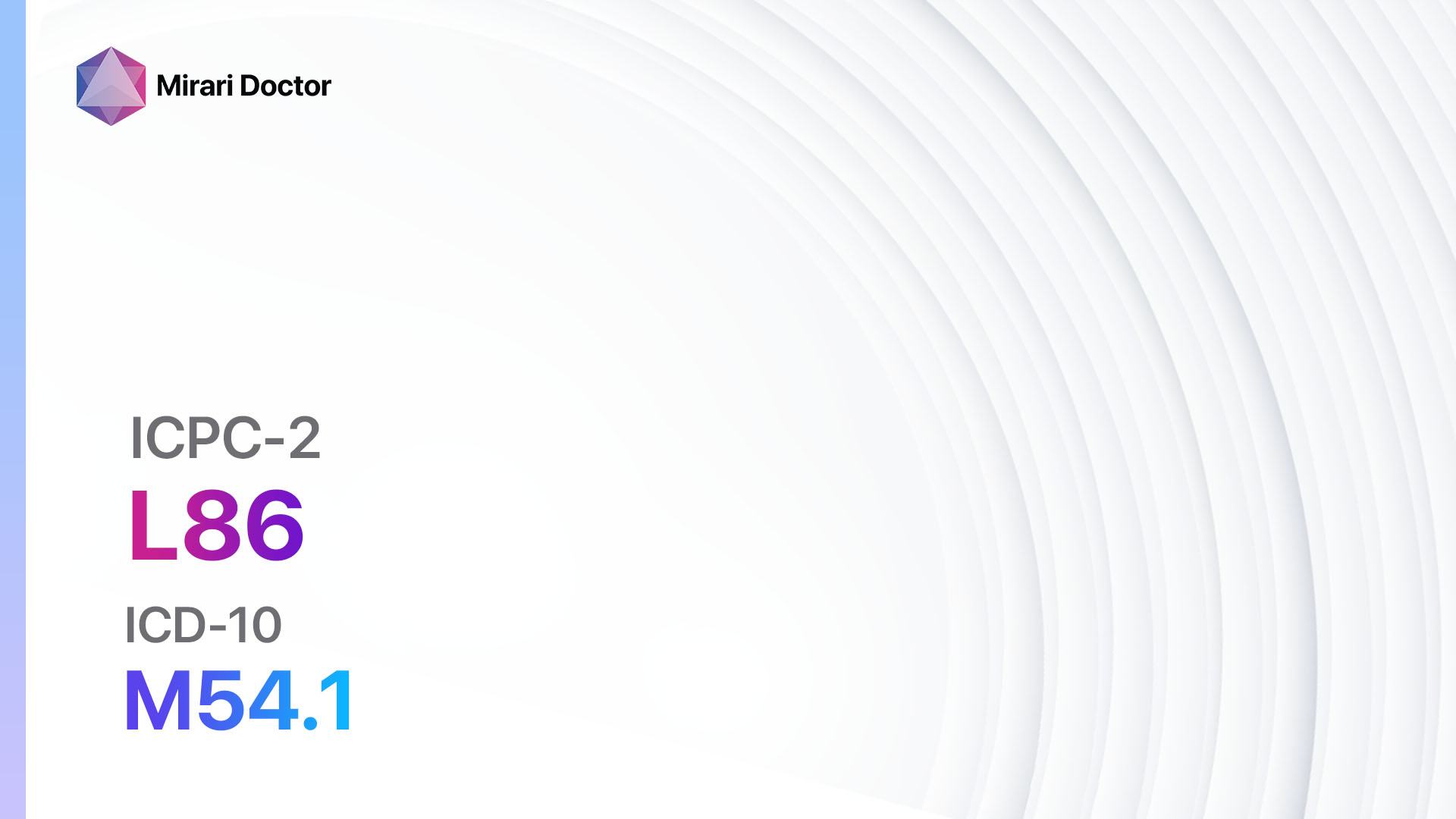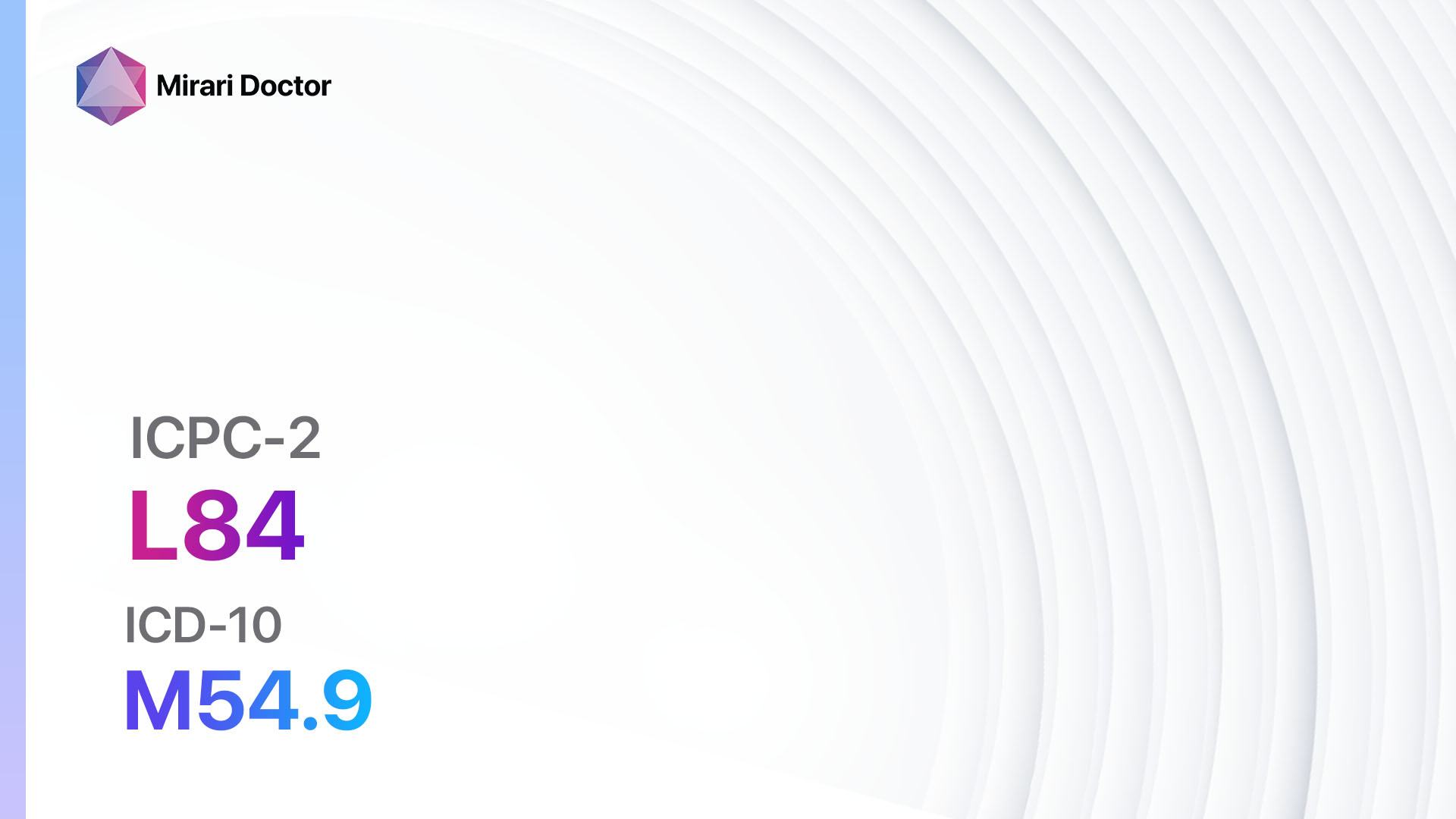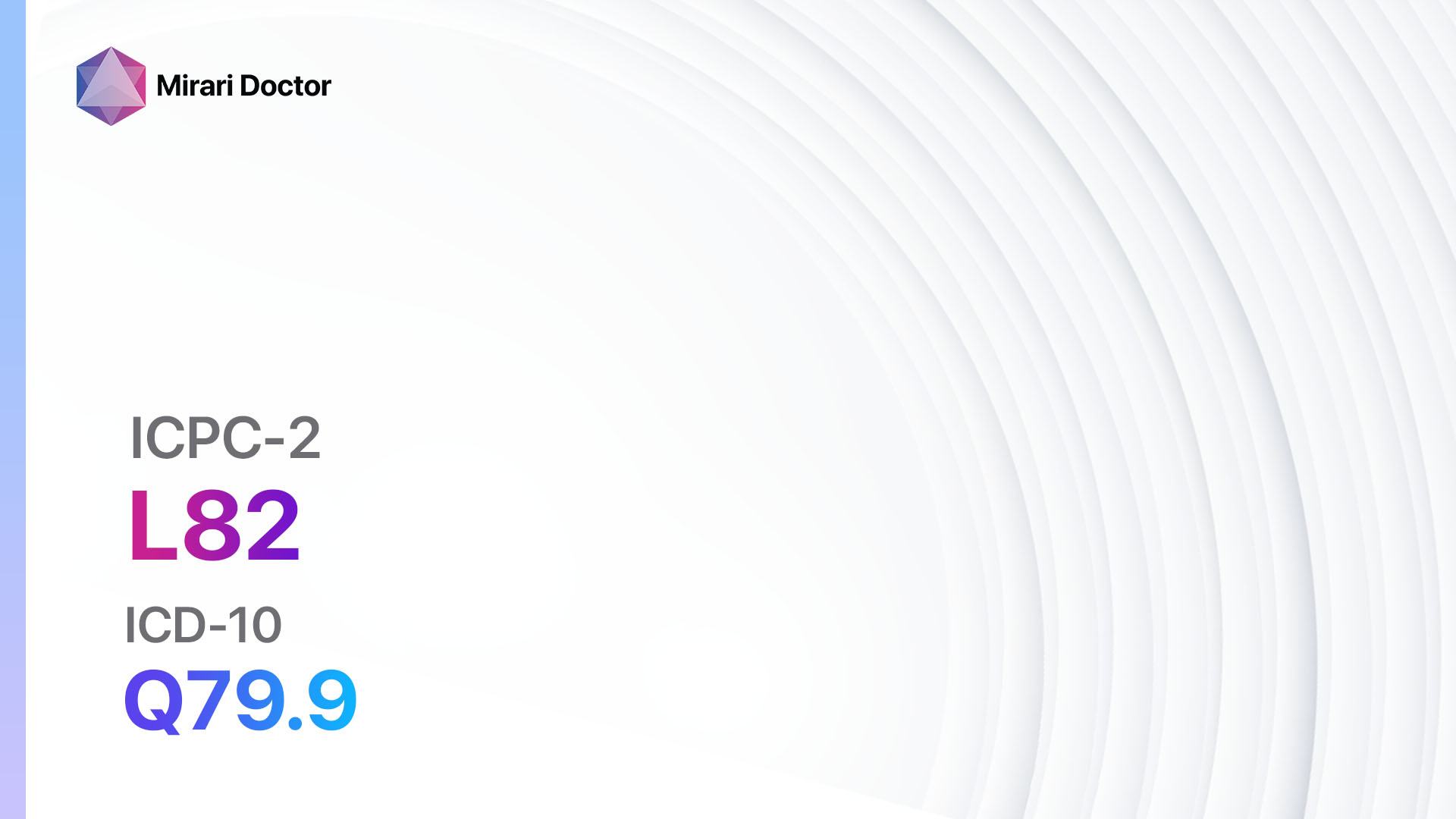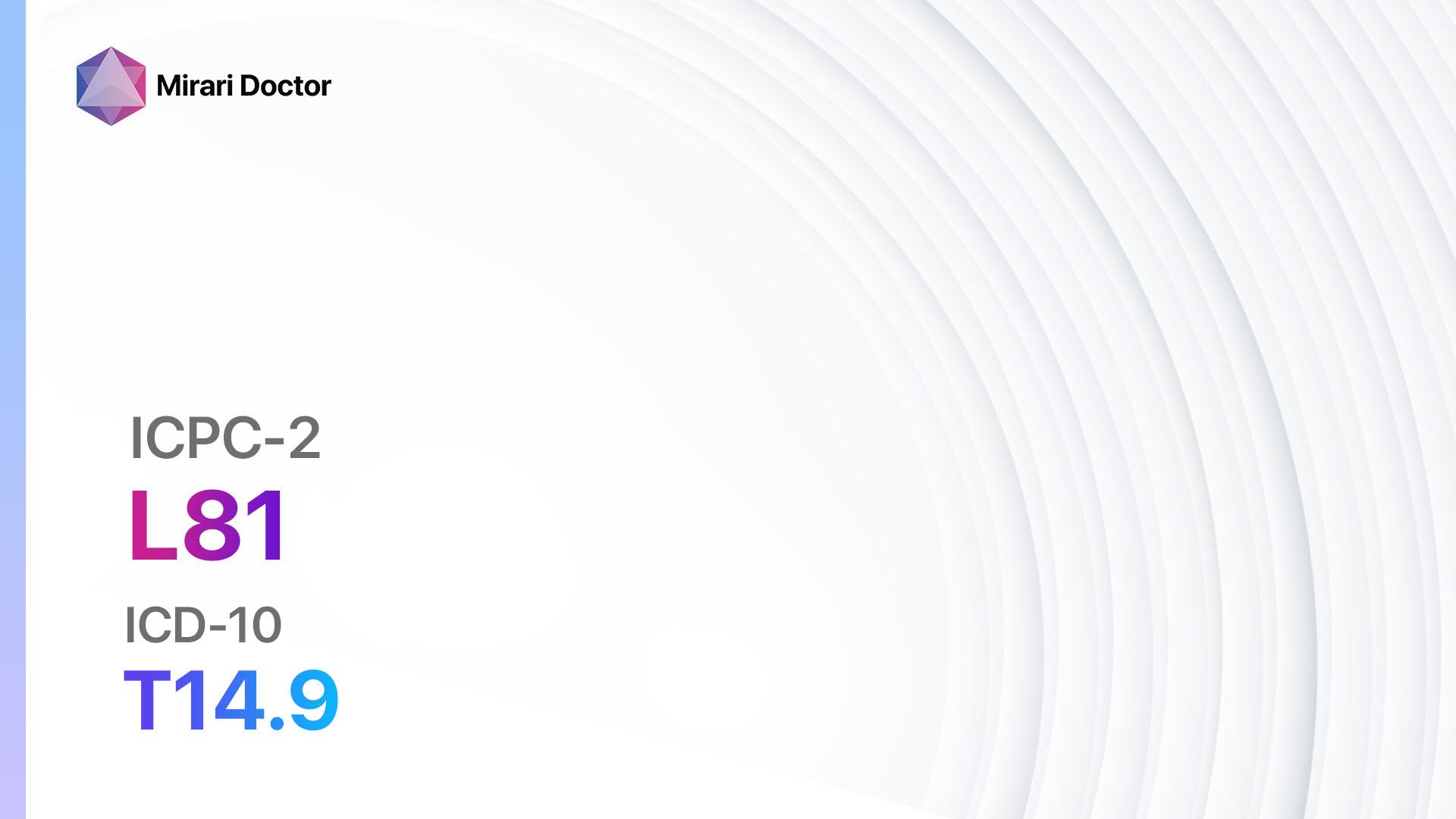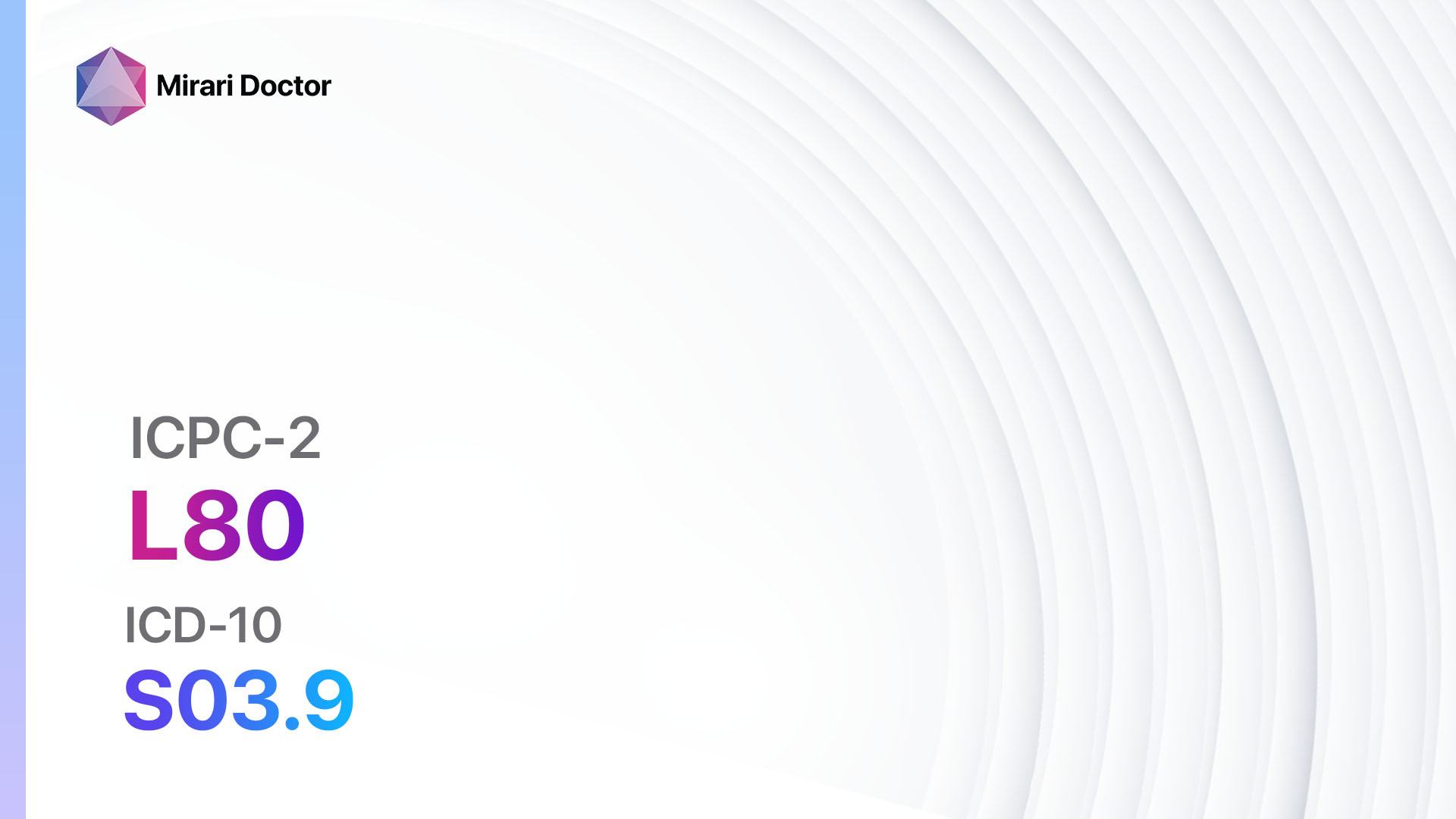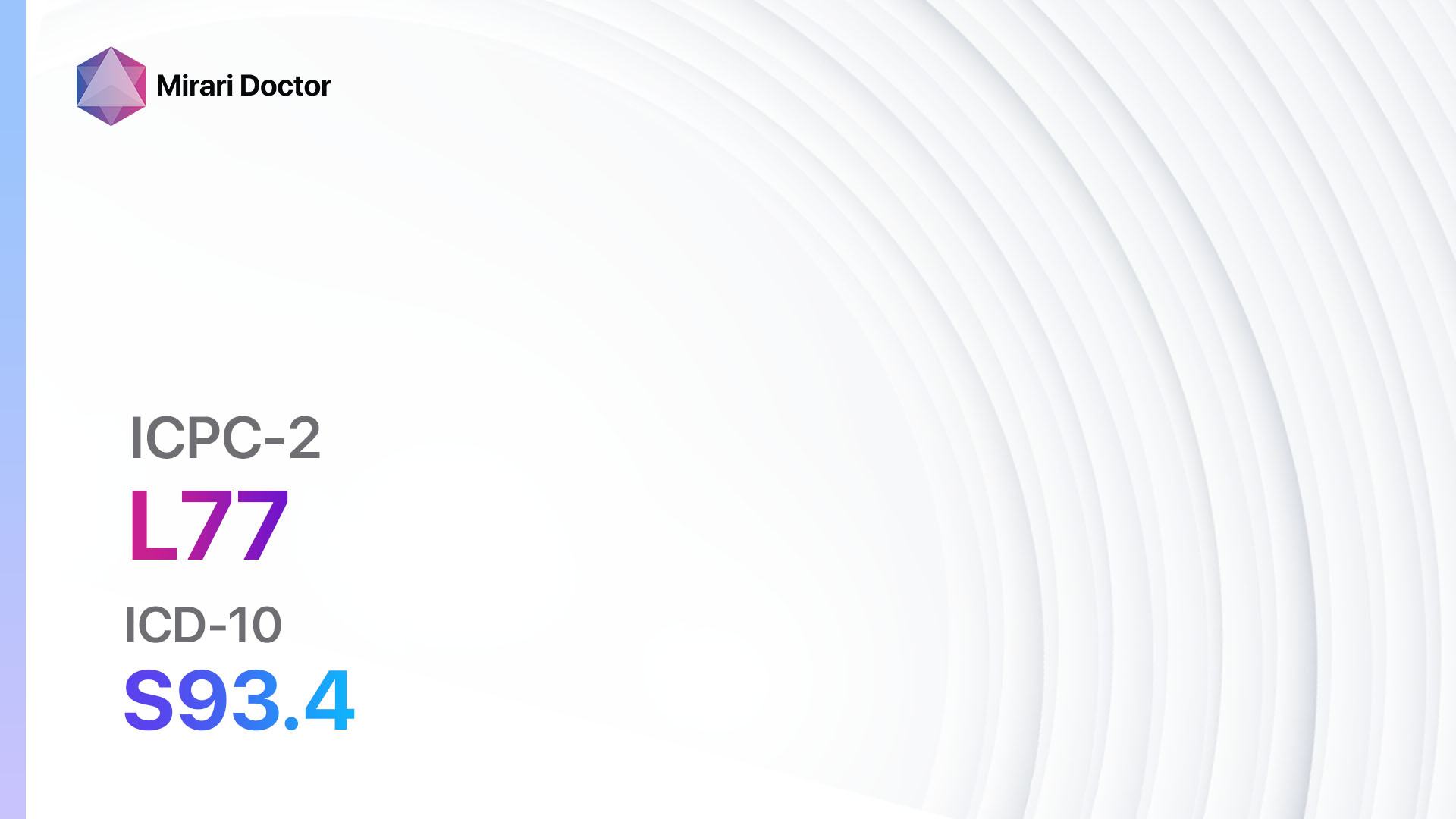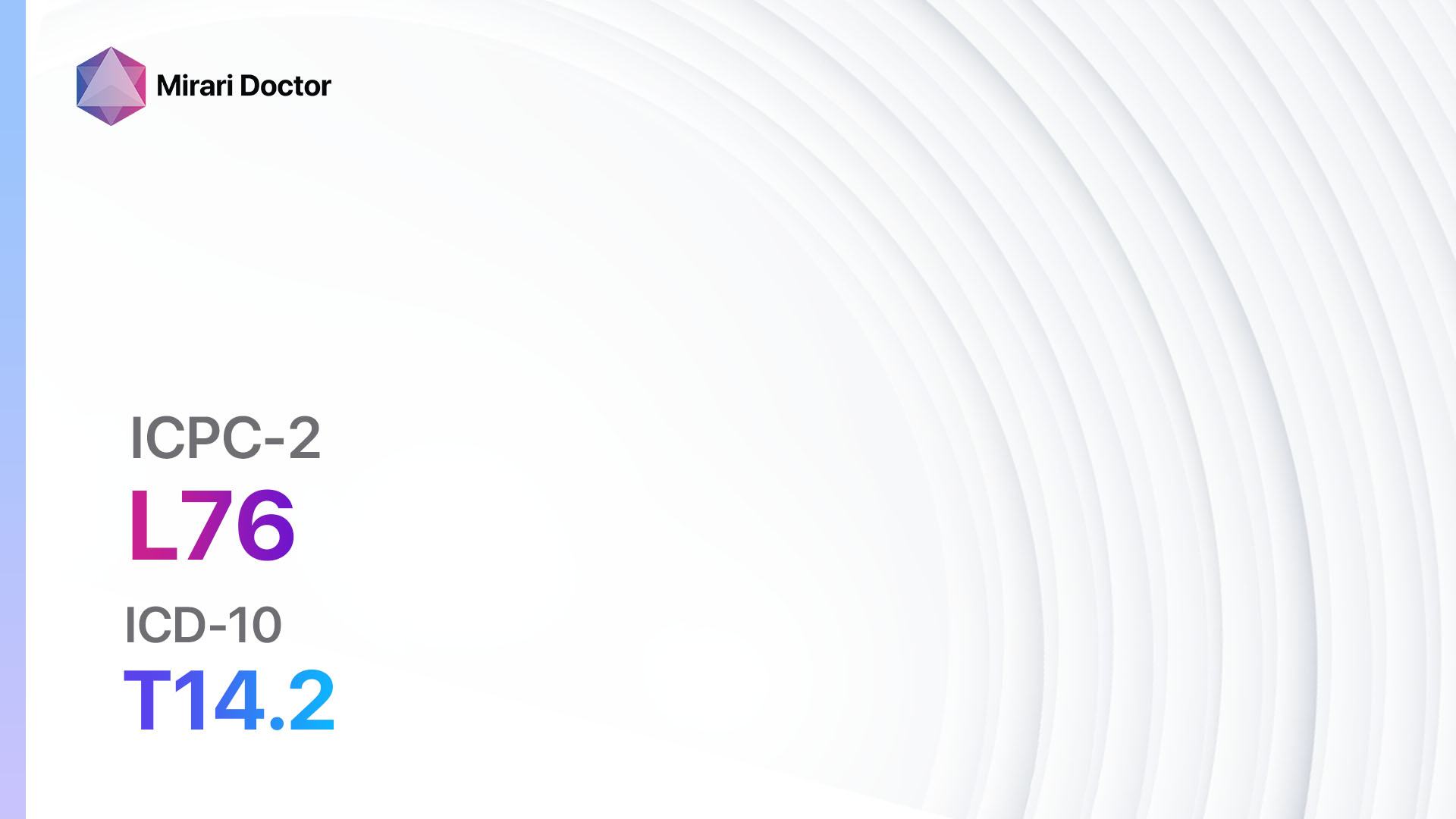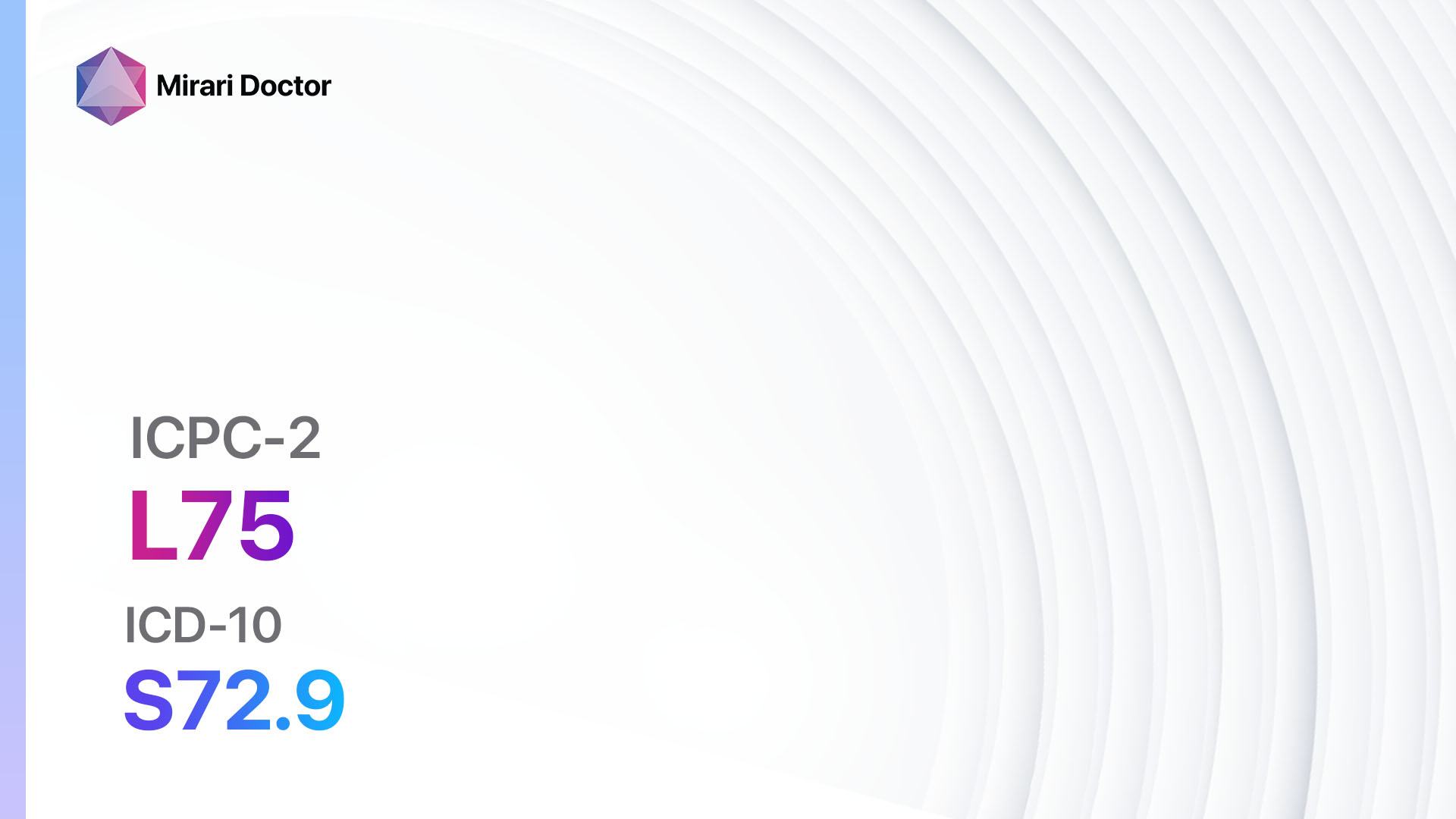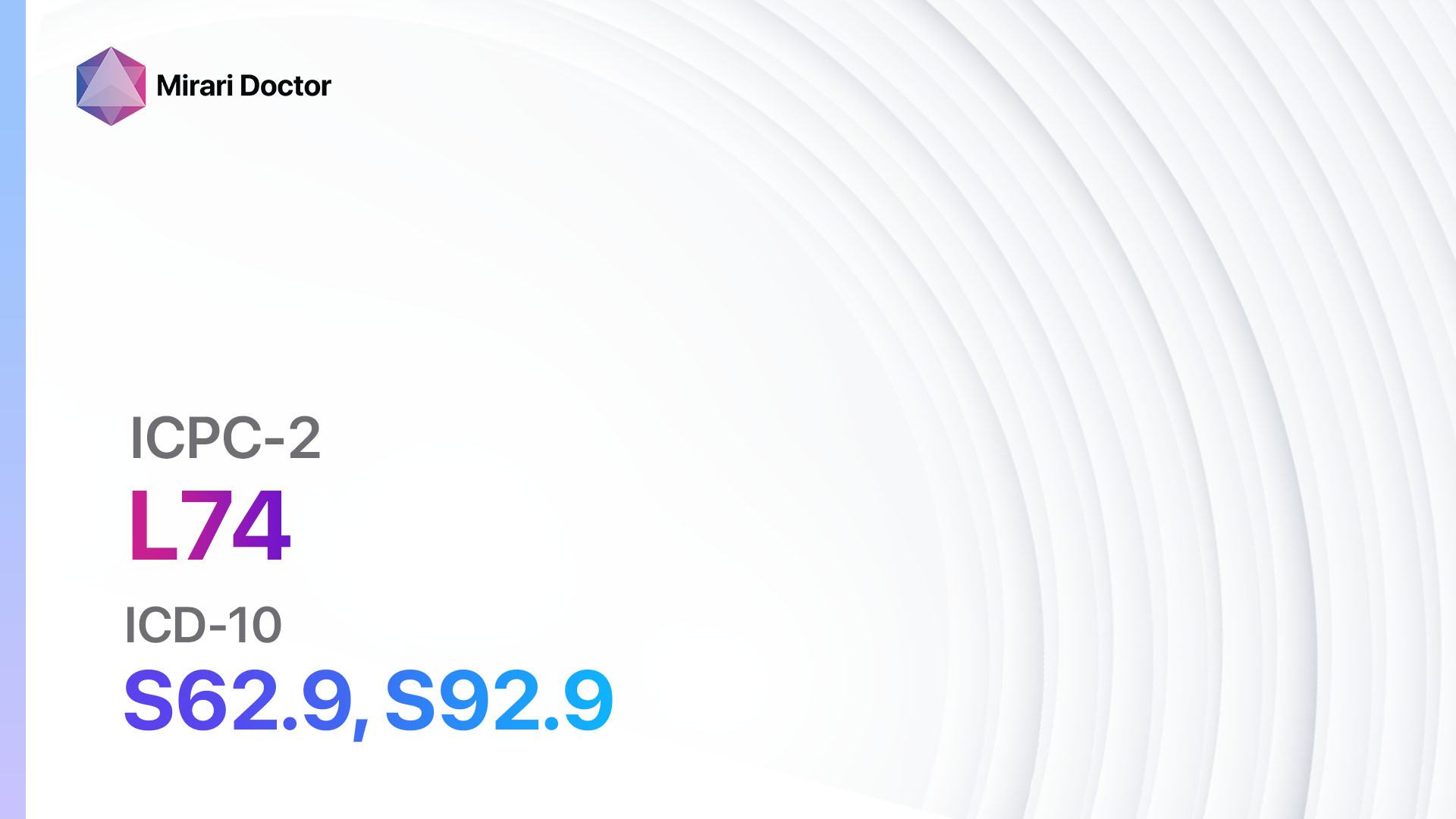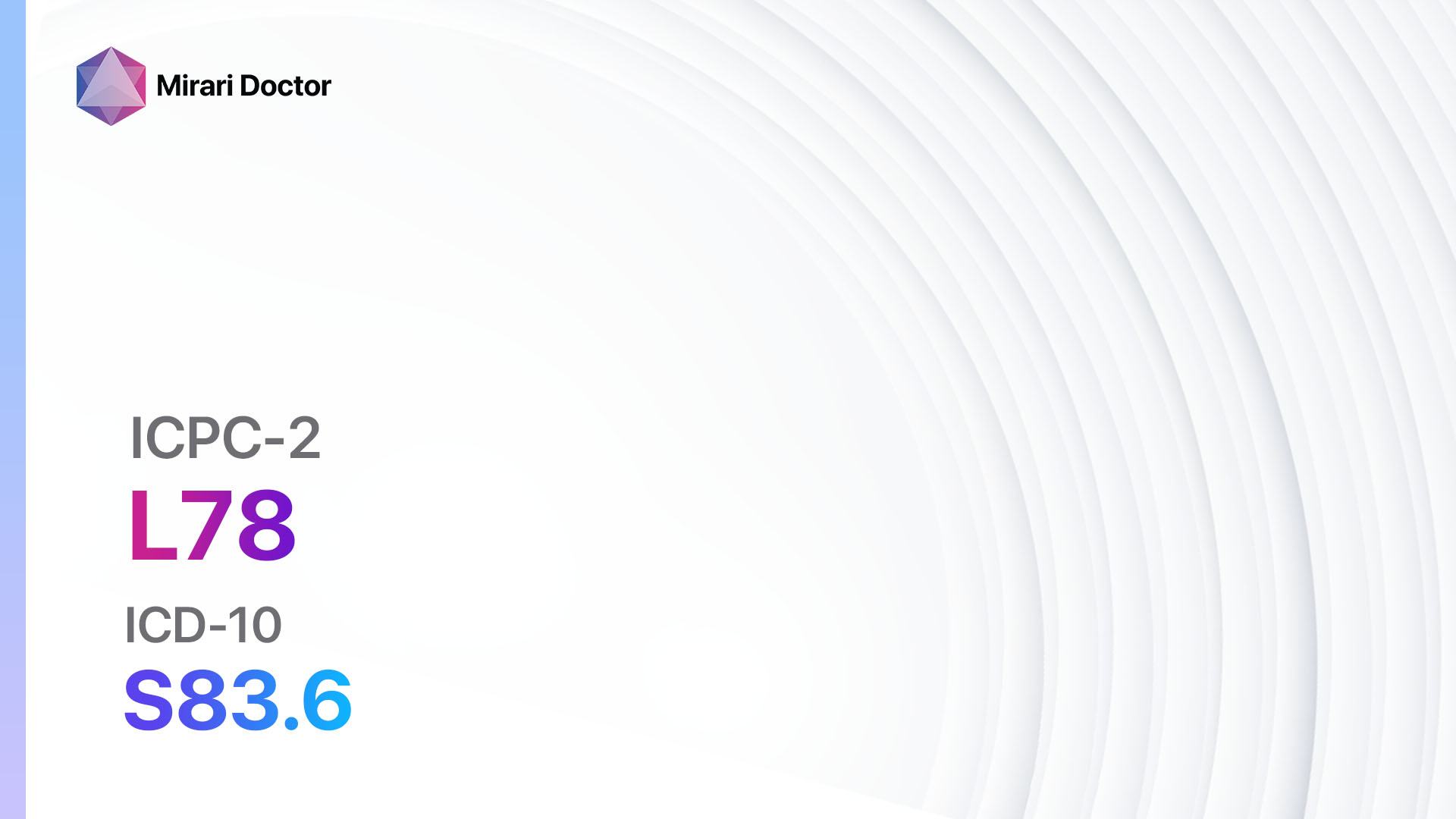
Introduction
Sprain/strain of the knee is a common injury that occurs when the ligaments or muscles around the knee joint are stretched or torn. This can result in pain, swelling, and limited mobility[1][2]. The aim of this guide is to provide healthcare professionals with a comprehensive overview of the diagnosis and management of sprain/strain of the knee.
Codes
Symptoms
- Pain in the knee joint[5]
- Swelling and inflammation around the knee[6]
- Difficulty in bearing weight on the affected leg[7]
- Limited range of motion[8]
- Bruising or discoloration around the knee[9]
Causes
- Sudden twisting or pivoting movements of the knee[1]
- Direct impact or trauma to the knee joint[2]
- Overuse or repetitive stress on the knee joint[5]
- Weak or imbalanced muscles around the knee[6]
Diagnostic Steps
Medical History
- Gather information about the patient’s symptoms, including the onset, duration, and severity of pain.[7]
- Ask about any previous knee injuries or surgeries.[8]
- Inquire about any activities or events that may have caused the injury.[9]
- Assess for any underlying medical conditions that may contribute to knee instability or weakness.[1]
Physical Examination
- Observe the knee for any visible signs of swelling, bruising, or deformity.[2]
- Palpate the knee joint to assess for tenderness or pain.[3]
- Perform range of motion tests to evaluate the extent of movement and any limitations.[4]
- Test the stability of the knee joint by applying gentle pressure in different directions.[5]
- Assess the strength and flexibility of the muscles around the knee.[6]
Laboratory Tests
- No specific laboratory tests are required for the diagnosis of sprain/strain of the knee.[7]
- Blood tests may be ordered to rule out other conditions or to assess for signs of infection or inflammation.[8]
Diagnostic Imaging
- X-rays: Useful for ruling out fractures or other bony abnormalities.[9]
- MRI (Magnetic Resonance Imaging): Provides detailed images of the soft tissues, such as ligaments and tendons, to assess for tears or other injuries.[1]
- Ultrasound: Can be used to visualize the structures of the knee joint and assess for any abnormalities.[2]
Other Tests
- Arthroscopy: A minimally invasive procedure that allows direct visualization of the knee joint using a small camera. It can be used to diagnose and treat certain knee injuries.
Follow-up and Patient Education
- Provide the patient with information about the diagnosis and expected recovery time.[4]
- Recommend appropriate pain management strategies, such as rest, ice, compression, and elevation (RICE).[5]
- Advise the patient on the importance of physical therapy and rehabilitation exercises to regain strength and mobility.[6]
- Schedule follow-up appointments to monitor the progress of the injury and adjust the treatment plan if necessary.[10]
Possible Interventions
Traditional Interventions
Medications:
Top 5 drugs for Sprain/strain of knee:
- Nonsteroidal anti-inflammatory drugs (NSAIDs) (e.g., Ibuprofen, Naproxen):
- Cost: Generic versions can be $3-$20/month.
- Contraindications: History of gastrointestinal bleeding, kidney disease.
- Side effects: Upset stomach, heartburn.
- Severe side effects: Stomach ulcers, kidney damage.
- Drug interactions: Blood thinners, certain blood pressure medications.
- Warning: Prolonged use may increase the risk of cardiovascular events.
- Acetaminophen:
- Cost: Generic versions can be $3-$10/month.
- Contraindications: Liver disease, alcoholism.
- Side effects: Rare at therapeutic doses.
- Severe side effects: Liver damage (with high doses or chronic use).
- Drug interactions: None significant.
- Warning: Avoid exceeding the recommended daily dose.
- Muscle relaxants (e.g., Cyclobenzaprine):
- Cost: Generic versions can be $10-$30/month.
- Contraindications: Glaucoma, heart rhythm disorders.
- Side effects: Drowsiness, dry mouth.
- Severe side effects: Confusion, hallucinations.
- Drug interactions: Sedatives, certain antidepressants.
- Warning: May cause drowsiness, avoid driving or operating machinery.
- Topical analgesics (e.g., Lidocaine patches, Capsaicin cream):
- Cost: Lidocaine patches can be $10-$20/patch. Capsaicin cream can be $10-$20/tube.
- Contraindications: Allergy to local anesthetics (for lidocaine patches), broken skin (for capsaicin cream).
- Side effects: Skin irritation, burning sensation.
- Severe side effects: Allergic reactions.
- Drug interactions: None significant.
- Warning: Avoid contact with eyes or mucous membranes.
- Corticosteroids (e.g., Prednisone):
- Cost: Generic versions can be $10-$30/month.
- Contraindications: Active infections, uncontrolled diabetes.
- Side effects: Increased appetite, weight gain.
- Severe side effects: Osteoporosis, adrenal suppression.
- Drug interactions: Nonsteroidal anti-inflammatory drugs (NSAIDs), certain antibiotics.
- Warning: Prolonged use may require tapering to avoid adrenal insufficiency.
Alternative Drugs:
- Topical NSAIDs (e.g., Diclofenac gel): Can provide localized pain relief with fewer systemic side effects.
- Tramadol: An opioid analgesic that may be used for severe pain not responding to other medications.
- Gabapentin: An anticonvulsant that can be effective for neuropathic pain associated with knee injuries.
- Steroid injections: Can be used for severe pain and inflammation, but should be used judiciously due to potential side effects.
- Hyaluronic acid injections: May be considered for patients with persistent knee pain and limited response to other treatments.
Surgical Procedures:
- Surgery is generally not indicated for most cases of sprain/strain of the knee.
- However, in severe cases or when conservative measures fail, surgical options may include:
- Arthroscopic surgery to repair or reconstruct torn ligaments.
- Open surgery for complex or multiple ligament injuries.
- Knee replacement surgery for severe joint damage.
Alternative Interventions
- Physical therapy: Helps improve strength, flexibility, and stability of the knee. Cost: $50-$150 per session.
- Chiropractic care: May help with pain relief and improving joint function. Cost: $50-$200 per session.
- Acupuncture: May provide pain relief and promote healing. Cost: $60-$120 per session.
- Massage therapy: Can help reduce muscle tension and improve circulation. Cost: $50-$100 per session.
- Herbal supplements: Some herbs, such as turmeric and ginger, have anti-inflammatory properties. Cost: Varies depending on the specific supplement.
Lifestyle Interventions
- Rest and elevation: Allowing the knee to rest and elevating it can help reduce swelling and promote healing. Cost: None.
- Ice and heat therapy: Applying ice packs or heat packs to the knee can help relieve pain and reduce inflammation. Cost: $5-$20 for ice packs or heat packs.
- Compression bandages or braces: Provide support and stability to the knee joint. Cost: $10-$50 for compression bandages or braces.
- Weight management: Losing excess weight can reduce stress on the knee joint. Cost: None.
- Proper footwear and orthotics: Using supportive shoes or orthotic inserts can help improve alignment and reduce strain on the knee. Cost: $50-$200 for orthotics.
It is important to note that the cost ranges provided are approximate and may vary depending on the location and availability of the interventions.
Mirari Cold Plasma Alternative Intervention
Understanding Mirari Cold Plasma
- Safe and Non-Invasive Treatment: Mirari Cold Plasma is a safe and non-invasive treatment option for various skin conditions. It does not require incisions, minimizing the risk of scarring, bleeding, or tissue damage.
- Efficient Extraction of Foreign Bodies: Mirari Cold Plasma facilitates the removal of foreign bodies from the skin by degrading and dissociating organic matter, allowing easier access and extraction.
- Pain Reduction and Comfort: Mirari Cold Plasma has a local analgesic effect, providing pain relief during the treatment, making it more comfortable for the patient.
- Reduced Risk of Infection: Mirari Cold Plasma has antimicrobial properties, effectively killing bacteria and reducing the risk of infection.
- Accelerated Healing and Minimal Scarring: Mirari Cold Plasma stimulates wound healing and tissue regeneration, reducing healing time and minimizing the formation of scars.
Mirari Cold Plasma Prescription
Video instructions for using Mirari Cold Plasma Device – L78 Sprain/strain of knee (ICD-10:S83.6)
| Mild | Moderate | Severe |
| Mode setting: 2 (Wound Healing) Location: 0 (Localized) Morning: 15 minutes, Evening: 15 minutes |
Mode setting: 2 (Wound Healing) Location: 0 (Localized) Morning: 30 minutes, Lunch: 30 minutes, Evening: 30 minutes |
Mode setting: 2 (Wound Healing) Location: 0 (Localized) Morning: 30 minutes, Lunch: 30 minutes, Evening: 30 minutes |
| Mode setting: 9 (Arthritis) Location: 0 (Localized) Morning: 15 minutes, Evening: 15 minutes |
Mode setting: 9 (Arthritis) Location: 0 (Localized) Morning: 30 minutes, Lunch: 30 minutes, Evening: 30 minutes |
Mode setting: 9 (Arthritis) Location: 0 (Localized) Morning: 30 minutes, Lunch: 30 minutes, Evening: 30 minutes |
| Total Morning: 30 minutes approx. $5 USD, Evening: 30 minutes approx. $5 USD |
Total Morning: 60 minutes approx. $10 USD, Lunch: 60 minutes approx. $10 USD, Evening: 60 minutes approx. $10 USD, |
Total Morning: 60 minutes approx. $10 USD, Lunch: 60 minutes approx. $10 USD, Evening: 60 minutes approx. $10 USD, |
| Usual treatment for 7-60 days approx. $70 USD – $600 USD | Usual treatment for 6-8 weeks approx. $1,260 USD – $1,680 USD |
Usual treatment for 3-6 months approx. $2,700 USD – $5,400 USD
|
 |
|
Use the Mirari Cold Plasma device to treat Sprain/strain of knee effectively.
WARNING: MIRARI COLD PLASMA IS DESIGNED FOR THE HUMAN BODY WITHOUT ANY ARTIFICIAL OR THIRD PARTY PRODUCTS. USE OF OTHER PRODUCTS IN COMBINATION WITH MIRARI COLD PLASMA MAY CAUSE UNPREDICTABLE EFFECTS, HARM OR INJURY. PLEASE CONSULT A MEDICAL PROFESSIONAL BEFORE COMBINING ANY OTHER PRODUCTS WITH USE OF MIRARI.
Step 1: Cleanse the Skin
- Start by cleaning the affected area of the skin with a gentle cleanser or mild soap and water. Gently pat the area dry with a clean towel.
Step 2: Prepare the Mirari Cold Plasma device
- Ensure that the Mirari Cold Plasma device is fully charged or has fresh batteries as per the manufacturer’s instructions. Make sure the device is clean and in good working condition.
- Switch on the Mirari device using the power button or by following the specific instructions provided with the device.
- Some Mirari devices may have adjustable settings for intensity or treatment duration. Follow the manufacturer’s instructions to select the appropriate settings based on your needs and the recommended guidelines.
Step 3: Apply the Device
- Place the Mirari device in direct contact with the affected area of the skin. Gently glide or hold the device over the skin surface, ensuring even coverage of the area experiencing.
- Slowly move the Mirari device in a circular motion or follow a specific pattern as indicated in the user manual. This helps ensure thorough treatment coverage.
Step 4: Monitor and Assess:
- Keep track of your progress and evaluate the effectiveness of the Mirari device in managing your Sprain/strain of knee. If you have any concerns or notice any adverse reactions, consult with your health care professional.
Note
This guide is for informational purposes only and should not replace the advice of a medical professional. Always consult with your healthcare provider or a qualified medical professional for personal advice, diagnosis, or treatment. Do not solely rely on the information presented here for decisions about your health. Use of this information is at your own risk. The authors of this guide, nor any associated entities or platforms, are not responsible for any potential adverse effects or outcomes based on the content.
Mirari Cold Plasma System Disclaimer
- Purpose: The Mirari Cold Plasma System is a Class 2 medical device designed for use by trained healthcare professionals. It is registered for use in Thailand and Vietnam. It is not intended for use outside of these locations.
- Informational Use: The content and information provided with the device are for educational and informational purposes only. They are not a substitute for professional medical advice or care.
- Variable Outcomes: While the device is approved for specific uses, individual outcomes can differ. We do not assert or guarantee specific medical outcomes.
- Consultation: Prior to utilizing the device or making decisions based on its content, it is essential to consult with a Certified Mirari Tele-Therapist and your medical healthcare provider regarding specific protocols.
- Liability: By using this device, users are acknowledging and accepting all potential risks. Neither the manufacturer nor the distributor will be held accountable for any adverse reactions, injuries, or damages stemming from its use.
- Geographical Availability: This device has received approval for designated purposes by the Thai and Vietnam FDA. As of now, outside of Thailand and Vietnam, the Mirari Cold Plasma System is not available for purchase or use.
References
- Bollen, S. (2000). Epidemiology of knee injuries: diagnosis and triage. British journal of sports medicine, 34(3), 227-228.
- Majewski, M., Susanne, H., & Klaus, S. (2006). Epidemiology of athletic knee injuries: A 10-year study. The knee, 13(3), 184-188.
- WONCA International Classification Committee. (1998). ICPC-2: International classification of primary care. Oxford University Press, USA.
- World Health Organization. (2004). ICD-10: international statistical classification of diseases and related health problems: tenth revision. World Health Organization.
- Brukner, P. (2012). Brukner & Khan’s clinical sports medicine. McGraw-Hill North Ryde.
- Doral, M. N., Alam, M., Bozkurt, M., Turhan, E., Atay, O. A., Dönmez, G., & Maffulli, N. (2010). Functional anatomy of the Achilles tendon. Knee Surgery, Sports Traumatology, Arthroscopy, 18(5), 638-643.
- Jackson, J. L., O’Malley, P. G., & Kroenke, K. (2003). Evaluation of acute knee pain in primary care. Annals of internal medicine, 139(7), 575-588.
- Malanga, G. A., Andrus, S., Nadler, S. F., & McLean, J. (2003). Physical examination of the knee: a review of the original test description and scientific validity of common orthopedic tests. Archives of physical medicine and rehabilitation, 84(4), 592-603.
- Kocabey, Y., Tetik, O., Isbell, W. M., Atay, Ö. A., & Johnson, D. L. (2004). The value of clinical examination versus magnetic resonance imaging in the diagnosis of meniscal tears and anterior cruciate ligament rupture. Arthroscopy: The Journal of Arthroscopic & Related Surgery, 20(7), 696-700.
- Lam, M. H., Fong, D. T., Yung, P. S., Ho, E. P., Chan, W. Y., & Chan, K. M. (2009). Knee stability assessment on anterior cruciate ligament injury: Clinical and biomechanical approaches. BMC Sports Science, Medicine and Rehabilitation, 1(1), 1-9.
Related articles
Made in USA



